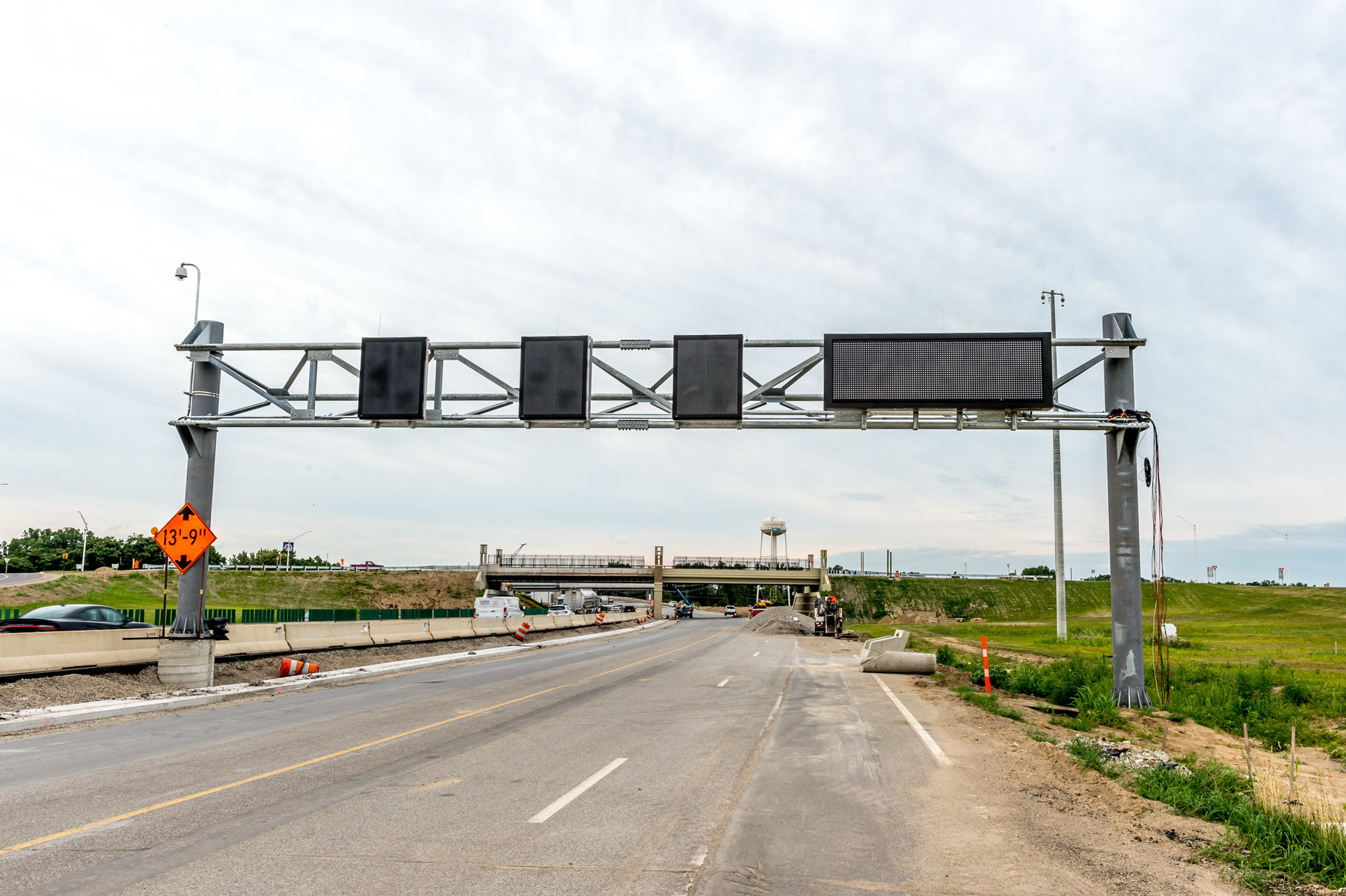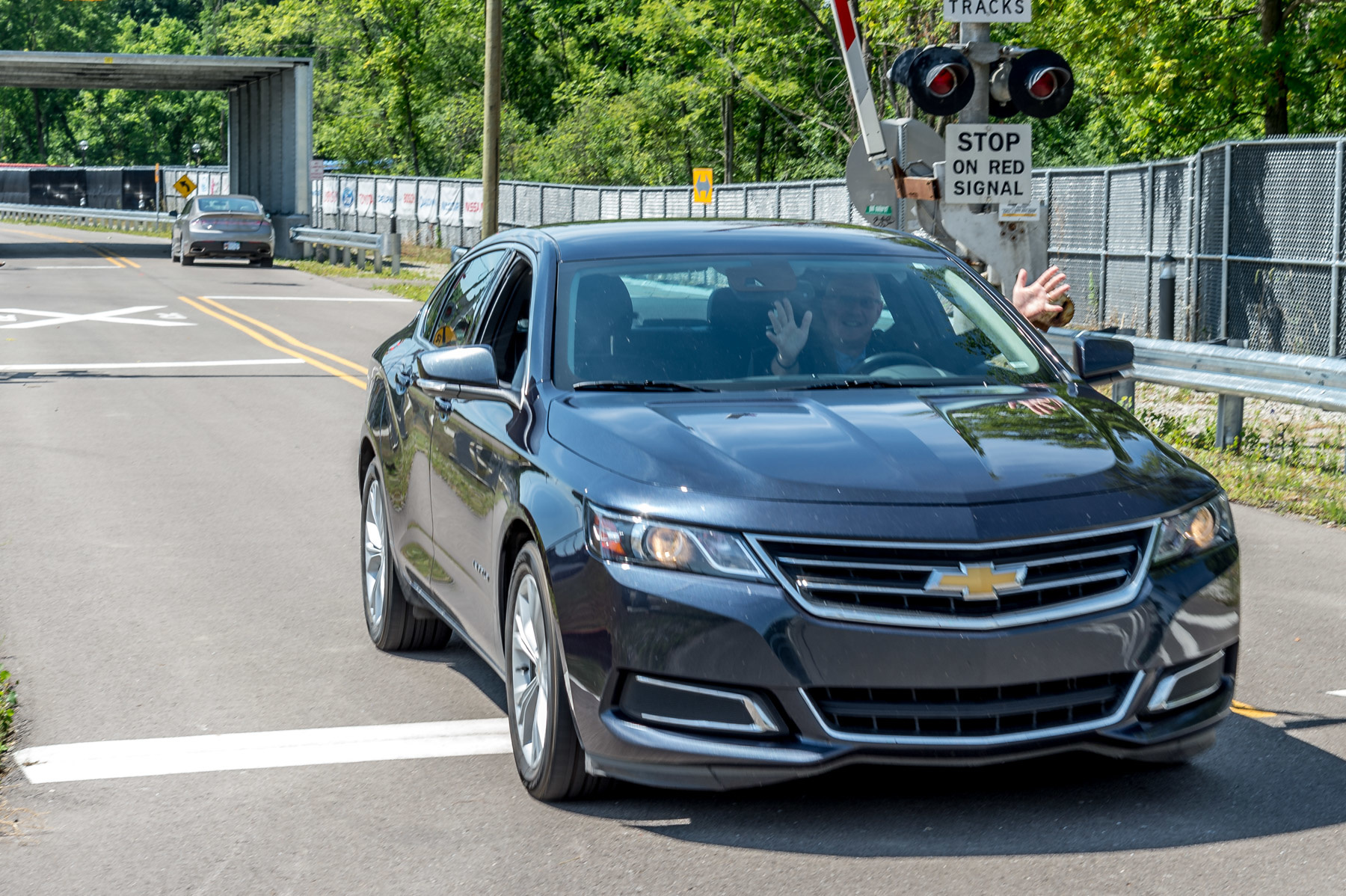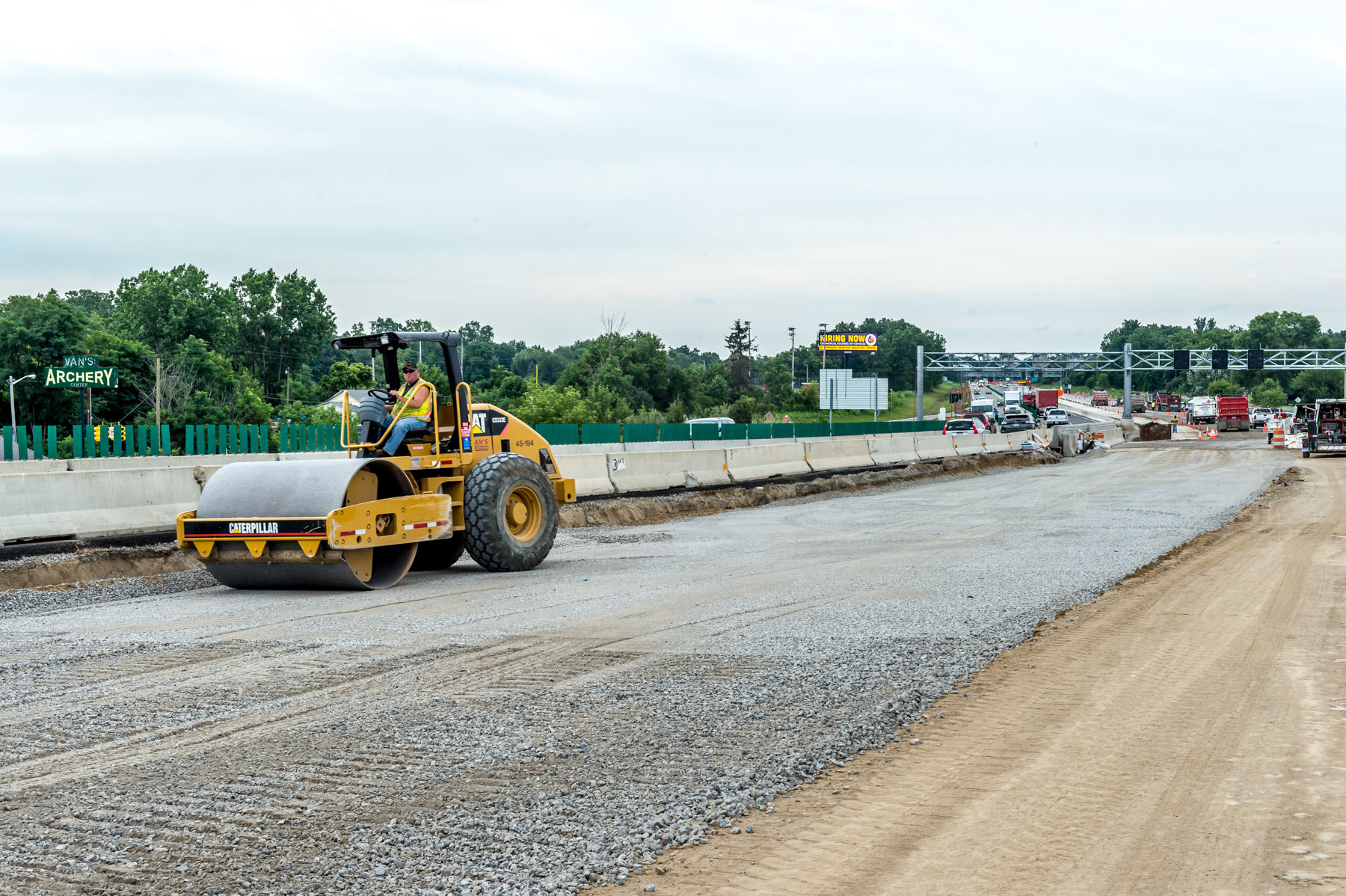Michigan DOT no topic
Michigan DOT sent this bulletin at 08/16/2017 10:02 AM EDT |
|
Having trouble viewing this email? View it as a Web page. |
August 2017
Michigan's first Flex Route supports driverless vehicle technology
 |
| 90 percent of the gantries have been installed along the Flex Route |
Once Michigan's first Flex Route, located on US-23 between M-14 and M-36, opens to traffic by the end of the year, its network of signs, cameras and electronic message boards will continually monitor traffic conditions and alert motorists about any travel-related issues that may be ahead. These cameras and sensors, located on the overhead gantries, also will continually collect data regarding real-world driving scenarios. This data can be used in the future to transmit and receive information from vehicles – such as slowdowns and alerts – and make recommendations to drivers of connected autonomous vehicles (CAV). Vehicle-to-infrastructure (V2I) traffic and road data also will be used to suggest how CAVs should respond when they approach other cars, bicycles, and/or pedestrians.
Supporting these automotive technological advancements with vehicle-to-infrastructure technology (V2I) is a critical part of a statewide umbrella called PlanetM, which represents the collective mobility effort.
"Michigan is recognized globally as a leader in automated vehicle research and technology," Michigan Department of Transportation (MDOT) Director Kirk Steudle said. "With PlanetM, we continue to develop the blueprint for next-generation mobility."
Michigan is home to 375 automotive research and development facilities, including seven global headquarters. The Michigan Legislature passed one of the nation's most progressive laws last year to attract even more research and development to the state. The new law allows driverless test vehicles – including truck platoons – to operate on Michigan roads.
Michigan now has two permanent autonomous vehicle testing sites – Mcity and the American Center for Mobility – that provide researchers with a model setting for conducting related research and development.
Mcity, a 32-acre research facility located on the University of Michigan campus, was introduced in July 2015 as the world's first testing ground for connected and autonomous vehicles. At Mcity, roadways that simulate urban and suburban environments serve to test how CAVs interact in various scenarios.
The American Center for Mobility, a 335-acre dedicated testing facility at historic Willow Run in Ypsilanti Township, already is the testing ground for several auto industry CAV research projects. It provides an all-weather environment to assess the interdependence of vehicles, and how they interact with smart roads, infrastructure and communication systems.
 |
| An autonomous car being tested at the Mcity facility. |
Because safety and mobility are always at the core of MDOT's focus, the department will be playing a pivotal role to help nurture both public and private research and development. MDOT's five-year plan includes a statewide expansion of smart corridors just like the US-23 Flex Route. Corporate research and development teams have been invited to test and validate vehicle behavior on public streets and along smart corridors. In addition, new V2I data will be collected in an effort to discover even better ways to communicate safety information between vehicles and the infrastructure. The US-23 Flex Route is at the cutting edge of these innovations, and will quickly change how drivers interact with roads.
"The US-23 Flex Route exemplifies our overall strategy to provide smart corridors for increased safety and advanced testing and research," Director Steudle explains. "This project will provide the communications backbone that will enable the roadside units to transmit and receive information from the cars going by it. The US-23 Flex Route fits right in with all the work that's taking place in Ann Arbor – at both Mcity and at Willow Run."
These connected and autonomous vehicles are travelling our roads right now – collecting data that will be used to advance the future of mobility. The goal is to provide an opportunity for a motorist to spend less time in traffic and more time at home with their family.
Current and upcoming construction activities (See map)
US-23:
- Between 8 Mile Road and M-36: Construction along the outside shoulder of southbound US-23, between 8 Mile Road and M-36.
- Barker Road to 8 Mile Road: Within these limits, two lanes of northbound and two lanes of southbound traffic have been placed on the northbound roadway and the existing southbound lanes are being fully reconstructed along with the Great Lakes Central Railroad bridge and construction of the Barker Road bridge. Once complete, all traffic will be shifted to the newly constructed southbound lanes, and the northbound lanes will be fully reconstructed. The contractor anticipates shifting the two southbound lanes back onto the southbound side of US-23 on approximately Aug. 15. The two northbound lanes will be shifted to the southbound side of US-23 on approximately Aug. 20, at which time all four lanes of traffic will be maintained on southbound US-23.
- North Territorial Road to Barker Road: Construction within the median for the new Flex Route. Concrete patching continues between the south of end of the project and North Territorial Road. Between North Territorial Road and Barker Road, base and leveling courses continue to be placed within the median for the new Flex Route. Ramp acceleration and deceleration extensions are also being constructed in this area. Interchange lightening at North Territorial Road and US-23 is almost complete. Light standards and luminaires have been installed.
- North Territorial Road: The new interchange, proposed ramps, and both roundabouts are now open. The existing North Territorial Road bridge has been demolished. 5 Mile Road remains closed, the temporary northbound on-ramp has been removed, and paving of 5 Mile Road has begun.
- 6 Mile Road: This road was closed on June 27. The roadway is anticipated to reopen in early September. Ramps at this interchange will close independently for rehabilitation. The southbound on-ramp is currently closed and the northbound off-ramp is scheduled to close on Aug. 7.
- 8 Mile Road: The new roundabouts have opened. The northbound on-ramp, southbound off-ramp, and Whitmore Lake Road tie-ins are complete. The northbound off-ramp remains open in its current configuration. The southbound US-23 on-ramp is tentatively scheduled to open on Aug. 15. Work is almost complete on installing lighting at the Whitmore Lake roundabout.
- Warren and Joy Roads: Construction of the Joy Road bridge was complete. However, due to a recent high load hit over southbound US-23, one lane will be open on the bridge with a temporary signal until the beam can be replaced. Construction of Warren Road is underway and is expected to be complete by the end of August. One lane of traffic is maintained on Warren Road with a temporary signal.
 |
| US-23 Flex Route lane construction. |
Intelligent Transportation System (ITS):
- Gantry installation continues throughout the length of the project. About 90 percent (26 out of 30 gantries) have been installed to date.
FAQ: How is the Flex Route related to driverless technology?
- Michigan's first Flex Route will provide the communications backbone to support connected autonomous vehicles (CAV) and vehicle-to-infrastructure (V2I) technology.
More photos are available on our Facebook page.
Download MDOT's Mi Drive traffic information app: www.michigan.gov/drive
